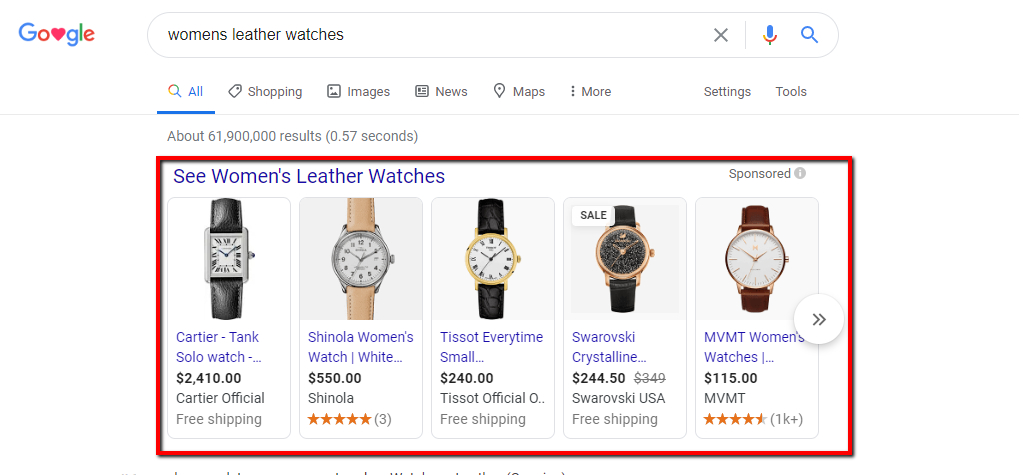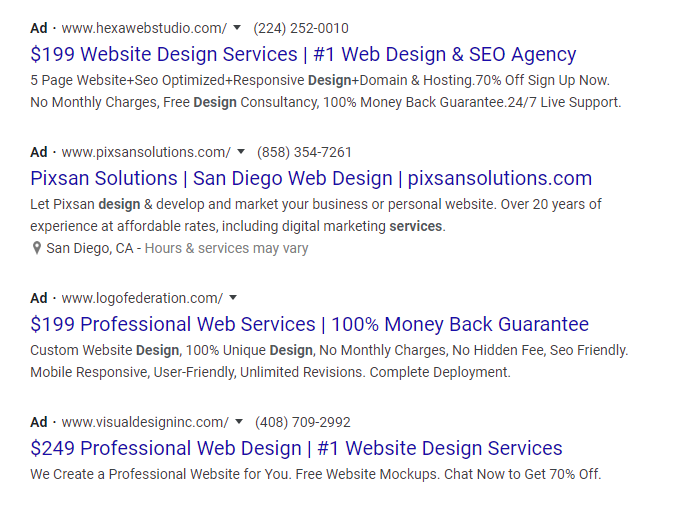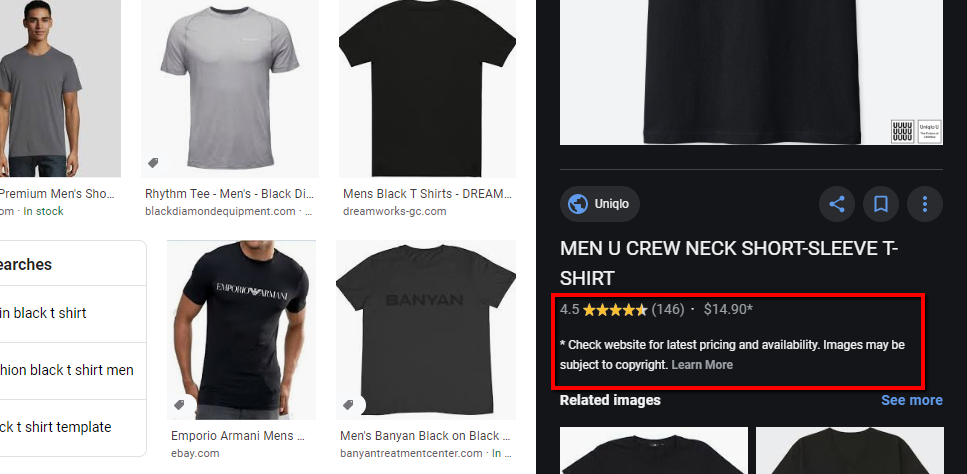6 Growth Strategies for eCommerce Success
If you have an eCommerce website, finding ways to spur growth means looking at new strategies that are specifically designed for online retail business. There are lots of methods, and each one offers a different way of bringing in shoppers. Some growth strategies – both big and small – can be key for eCommerce success.
Hacking new growth for eCommerce websites means considering a wide range of strategies designed for different kinds of business growth. For site owners looking to grow visits, or sales, reduce bounce rate, or increase brand loyalty, there is a wide swath of methods available. If you’re not looking at these methods, then you could be missing out.
Search Engine Shopping Campaigns
Shopping campaigns can port your products from your website directly to the search results page, allowing you to bring your site’s products to the shopper, instead of waiting for them to come to you. For retailers, Shopping campaigns represent a hugely important part of paid advertising strategy. Merkel’s Digital Marketing report claims that Shopping Ads on Google represented 60% percent of their total search ads—a dominance that’s grown steadily over the last several years.
With Shopping, you have the opportunity to get your products directly on the areas of the web that have pictures, prices, and ratings.
To get your products on Google Shopping, create a Google Merchant Center account that you can link with your store’s product data. You can supply this data to a Google Shopping campaign and have your store’s products appear on Google, with product listings linking directly to your store. Google’s Ad system offers 3 separate styles of ad:
- The Shopping tab on Google Search pages
- Google Search, next to search results (separate from PPC text ads) as well as Google Images search results
- Google Search Partner websites (if you choose)
- The Google Display Network
For Bing, you will run your Shopping campaign with Product Ads, which are run through the Microsoft Merchant Center. You can follow Microsoft’s guide for creating a campaign. You’ll need to verify your site’s domain with Bing before you can begin importing your product catalog into the Merchant Center.

Search Engine Optimization (SEO)
One of the more well-known strategies for internet success. And one of the biggest. Organic search results still account for more than a third of retail website traffic along with more than 30% of revenue. Though other strategies are growing quickly, search still represents one of the important segments for eCommerce site success.
SEO is an important way of making your website bring in users passively. This means tailoring on-page content, code, and meta-data to be optimized for search engine indexing algorithms from Google, Bing, and other search engines. SEO also relies on off-page factors like social media shares and organic backlinking that signals to search engines the legitimacy of your sites and improves your ability to rank.
On-page SEO strategies are factors that you can actually control, and include but aren’t limited to:
- Optimizing content to include keywords and to target visitor needs
- Meta data optimization (including page title tags and descriptions)
- Site structure and internal linking for optimized indexing
- Optimized site code for fast load time and mobile friendliness
Good SEO also goes hand-in-hand with other eCommerce growth hacking strategies, providing you a platform for social media content creation and improving your PPC Quality Score for successful paid advertising growth. High-quality content and site design can improve user experiences, help shoppers, and remove barriers to conversion.
Pay-Per-Click Advertising
Pay-per-Click Advertising, or PPC is another way of improving your site’s visibility to search engine users. PPC involves bidding to have your text ad display next to search results and paying a small fee any time someone clicks on your ad. PPC offers nearly instant results and allows you to target potential customers who are actually looking for products like yours.
Paid advertising on search engines is one of the fasted growing areas of digital marking – in 2019 passing organic search as the top revenue driver. As a matter of fact, it can make up as much as 36% of eCommerce retail revenue.
To capitalize on search PPC with Google, you need to use Google Ads (formerly called AdWords), and for Bing you’ll have to go through a Microsoft Advertising account. If you’re already running shopping campaigns, then you can use the same accounts to run your search ads. Since these ads are based on bids and on the “cost per click,” then the cost of running these ads is just based on your personal budget. For new businesses and eCommerce sites looking to drive revenue quickly, paid advertising is a good strategy. Revenue growth and success happens nearly instantaneously compared to organic search marketing.
Social Media Marketing
Social media marketing has quickly become one of the most important new strategies for eCommerce brand success. Paid social media ad campaigns allow eCommerce business to bring their products to where internet users spend a good portion of their time. It’s a strategy that allows eCommerce sites to curate their brand and develop direct interaction with followers.
This strategy is distinct in that often its efforts take place off-site and within the platforms of social media.
Among the most important social media platforms – Facebook, Youtube, Instagram, Reddit, Pinterest, LinkedIn, etc – there are ways to discover both new paid traffic and new natural traffic by way of creative content. For eCommerce business, a strongly unified brand is important to help tie together your presence across a wide range of websites.
Without dismissing the other methods of hacking your site’s eCommerce growth – social media instead offers advertises a way to work alongside other channels.
A study by We Are Social and Hootsuite found that by 2019, 45% of the world population was on social media, in the U.S. it was a staggering 95%. At the end of the decade 1 in 4 U.S. customers claimed to prefer being contacted by brands via social media, and over half claimed to follow some brands.
For each and every platform there are systems that allow marketers to bring either content or brands to visitors. Among the most popular are:
Facebook’s dominance in the social world means it’s the go-to for brands and businesses to try and grow their presence. Facebook now drives over 80% of all U.S. social referrals to eCommerce sites.
Facebook offers paid ads that can appear in user feeds along with ads in Facebook Messenger, Instagram, and the Facebook Audience network, along with the complete Facebook ecosystem of sites. With detailed user data Facebook allows advertisers to successfully hack into greater eCommerce growth with specifically targeted ads based on audience interests.
Most people will understand Instagram’s strength as a content marketing platform. Its photos, business profiles, and Stories mean it’s an increasingly visible place to build out branded content. For product advertising Instagram Shopping allows business to tag products directly into posts. It’s also in the process of rolling out in-app checkout, as a new strategy for eCommerce marketers to garner success outside of their own site domains.
Now advertisers are taking advantage of eCommerce advertising opportunities in videos, IGTV, carousels, and more.
Inbound & Content Marketing
Inbound marketing is a type of marketing that’s heavily content oriented but focuses on organically drawing in visitors interested in your content, instead of forcing your content in front of people. It ties in to several other “types” of marketing growth strategies, including social media, content marketing, and SEO. If you’re working on either one of these types of growth strategies, then you’re likely already doing some form of inbound marketing.
In addition to these, inbound marketing with on-site content (including information pages, guides, and blog posts) can be a good way of bringing in traffic and diverting visitor to your products.
Most marketers know that organic SEO performance, brand recognition, and brand loyalty are keys to eCommerce success – but these are hard to build. Inbound marketing helps to make your brand more visible. But you have to get inside the head of your customer.
Create blogs and informational pages, how-to videos, and more – that relate to your products. Tools like Google’s keyword planner or Ubersuggest are good for identifying keywords (or topics of interested) for your eCommerce niche. Another tool, AnswerThePublic, listens to autocomplete data from Google with the millions of searches it sees every day. You can use these to get insight about people’s questions, concerns, and interests and build out content tailored specifically to each one. By creating content from scratch that focus on shopper intent, you can successfully grow traffic to your eCommerce site and help lead people to your products.
Google Images
Site owners and eCommerce businesses might not be aware of the growth strategies and CTR that Google’s image search offers. Roughly three-quarters of Americans search for visual content prior to making a purchase. Plus, with more than 25% of over-all online search being for images, it makes sense to consider the potential.
Google’s image search features have evolved to be more suited for site traffic. In 2019 Google made small change to the image SERP so that instead of being able to “View Image” searchers would have only the option to visit the page directly. This means greater CTR to your site.
Plus, with good image optimization you’ll be able to improve rankings in the image SERP by using good naming convention and HTML image “alternate text” tags. Search engines use image file names and alt tags to know what’s inside photos. This means that naming your file “Mens-black-t-shirt.png,” with similar alt text, is better than giving your file the name “untitled.jpeg.”
Moreover, you can add schema markup to your product pages to give even more detail product info to shoppers in the SERP. High-intent shoppers will be able to see information like price, availability, the product image, product ratings, and more – all before they even get to your site.
If you’ve created a Google Merchant Center account product Feeds for your eCommerce site than you’ll also be able to take advantage of product displays that can appear in the image search section of Google. This offers yet another way to get your products in front of shoppers, boost CTR to your site, and increase eCommerce growth for conversions.

Contact us for more information on strategic search engine optimization services, PPC management, and social media paid digital marketing. Get a free site consultation along with new information on to grow your site and improve eCommerce success.
